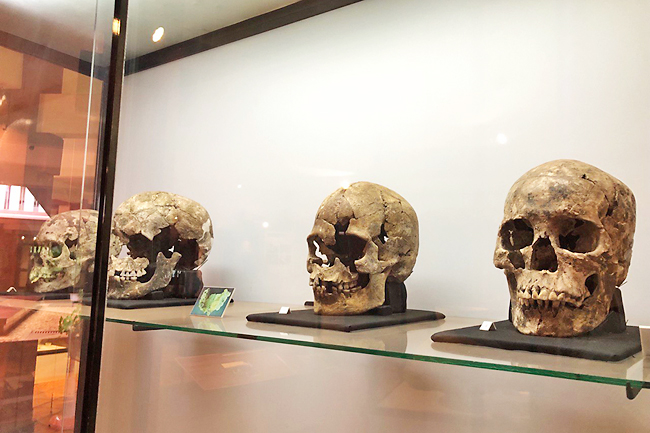ANN/THE PHNOM PENH POST – A visit to the majestic temples of Angkor Archaeological Park in Siem Reap province can be a thought-provoking experience for those unfamiliar with the rich history of the Angkorian era. The temples, filled with Khmer cultural treasures, may leave visitors with many unanswered questions about the grandeur and significance of this ancient civilisation.
A visit to the nearby Preah Norodom Sihanouk-Angkor Museum, operated by the APSARA National Authority (ANA), offers a unique opportunity to unravel the mysteries of the Angkorian era.
With a collection of over 3,000 priceless artefacts, the museum is both an artistic and educational delight. At any given time, around 300 of the most significant pieces are on display, providing a glimpse into the province’s rich history.
Situated in Slakram commune’s Boeung Don Pa village just outside Siem Reap Town, the museum was established in 2008, with newly discovered artefacts and those presented by members of the public constantly swelling the collection.
The most recent addition to the collection is a large turtle sculpture unearthed in a pond to the northeast of Bayon Temple in April. The turtle has not yet been put on display, as it is undergoing a meticulous cleaning process.
Acting director of the museum Phouy Savoeut explained the purpose of the museum, and how it has developed to The Post. He explained it was first opened to house and display 274 Buddha statues discovered buried together near Baneay Kdei temple in 2000 by a team of researchers investigating the ancient water system.



Their discovery raised the question of how they came to be buried during the reign of Jayavarman VII in the late 12th or early 13th Century. The answer to this question, and more, will be revealed to those who visit the museum.
Now, the museum is home to many more artefacts from the temples and other historic sites of Siem Reap. He explained some items in the museum’s collection remain in storage for their own protection and for research and restoration purposes, while many are on display for the public to admire and learn from.
These range from items discovered at the Kok Patri Temple site which date from the 15th to 19th Centuries, to the ancient burial grounds of Koh Ta Meas, which provide clues about people’s lives in prehistoric times.
“Each of these artefacts help visitors understand more about their Khmer ancestors and their way of life. Some of the items recovered from the tombs include everyday utensils, as well as jewellery like bronze bracelets, stones, beads, earrings and rings,” said Savoeut.
The museum is open to visitors from Tuesday to Sunday, although it is closed during Pchum Ben, Khmer New Year and Water Festival.
Tickets are just KHR1,000 for Cambodians – but free on the first Saturday of each month – or USD3 for foreign guests. Despite the low price of admission, the museum receives few foreign visitors.
Savoeut was of the view the low numbers may be due to fact that some tour organisers may have partnered with other museums. An average of 30 Cambodians come to admire the museum’s precious collection each day.
Savoeut explained several private schools also organise field trips to the museum.
He said that most state schools do not, although noted that Wat Bo Primary School was an exception, and often brought students to learn about their ancestors. He encouraged all guests of Siem Reap to visit the museum, because it will help them to better understand what they have seen at the ancient temples. “If we go to the temples, we only see the remains of these massive structures. But before the temples were built, who lived here?
This museum tells us about the Khmer people who lived here long ago,” he said.
“These artefacts give us clues about the lives of our Khmer ancestors from before the Angkorian period,” he added.
One young visitor to the museum, Kam Sot, explained that while he was originally from Siem Reap, his studies and career meant he had been away for seven years. Despite being a native of the province, he had never before visited the Preah Norodom Sihanouk-Angkor Museum.
After his interest was piqued by social media posts, he decided to pay his first visit.
“What I find fascinating is that all of the items on display are from Siem Reap province, not from other places. When people visit, they should take their time and read the information cards next to each piece, so they learn about the age of each item, as well as where it is from and what it is made from,” he said.
“I think all young people should visit here so they can learn more about their own history and people’s way of life in ancient times. We should not only be proud to be born Cambodian, we should also do something important and leave a legacy like our ancestors did,” he added.






